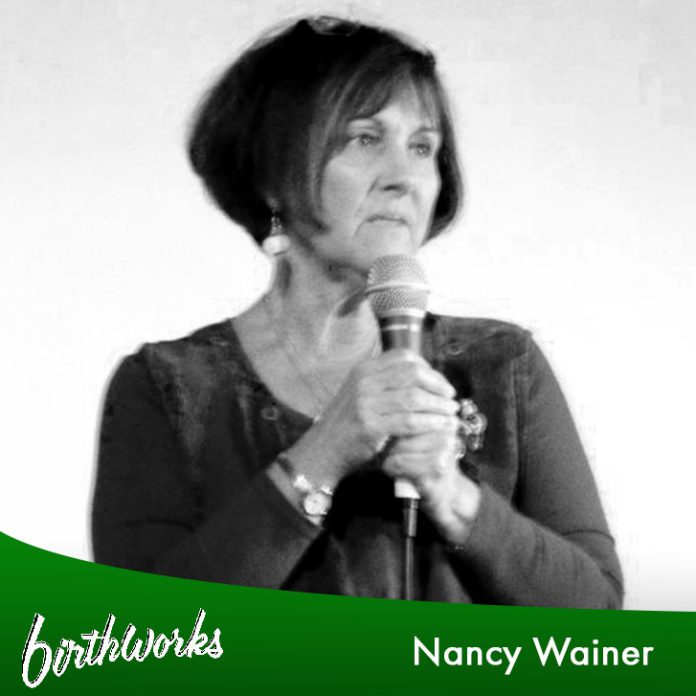
Sign up today to watch for only $37.
Keynote: Language of Birth by Nancy Wainer
Session Length: 90 Minutes
Contact Hours for CEUs: 1.5 (ACNM and MEAC) must pass the quiz given after completed in order to obtain contact hours.
Teaching Methods:
- Lecture
- Participatory discussion
- Powerpoint
- Live Streaming Video
- Pre-recorded Video
Behavioral Objectives:
Participants will be able to: Describe why the words that we use concerning birth are SO important and how they influence the decisions that we all make.
List new words that they can begin to use that will alter their perception – and the perception of others about what is happening at births.
Define what each of the words that we currently use means and how changing that word will redefine practices and procedures.
Listen to the words they use surrounding Birth and begin to make changes in how they speak about it and how they FEEL about it as a result.
Content Outline of Session:
- Intro: The Language of Birth – 10 min What does “language” mean —
The method of human communication, either spoken or written, consisting of the use of words in a structured and conventional way; the system of communication used by a particular community or country; audible, articulate, meaningful sound as produced by the action of the vocal organs; a systematic means of communicating ideas of feelings by the use of conventionalized signs, sounds, gestures, or marks having understood meanings; the suggestion by objects, actions, or conditions of associated ideas of feelings; a formal system of signs and symbols including rules for the formation and transformation of admissible expressions
- How Language defines Birth in the USA – 25 min
How we speak, the words we use, speaks volumes about Birth. What are some of the words – and their definitions – that we use which give us an idea as to how Birth is understood/perceived in our culture?
Discussion
To name a few: Water “ broke”; “low-lying” placenta; cervical
“dilation”; “elective” cesarean; “mucous plug”; “delivered”; birth
“canal”; “natural” cesarean; “station”; “contracted” pelvis; “aging”
placenta; EDD and EDC; “patient”; FTP, “late” baby or “overdue”; CPD;
“catching” babies; “ruptured” membranes, “ultra”sound, water “sac”
Examples of “Birth Positive Language” heads down, birth gel, waves/rushes, etc.
- Creating a New Language for Birth – 10 min
The words that need to be redefined in order for Birth to change in our culture and how this “revolution” takes place
- Social Change and Resistance to it – 10 min
The resistance on the part of even doulas and midwives – why? The deep-seated need to belong and to “speak the same language”as those around us in order to be – or imagine we are –understood
- Nonverbal Language & its impact – 15 min The spoken language is not the only “language” that is used at births:The language of toolsThe language of “dress”, The language of fear, Assess the mom, mirror, gain rapport, transform the space through love, trust, and relationship,
- A different perspective – 15 min
If a group of other people arrived from completely different countries and could not understand a word of English, and each of them observed what are generally seen as typical American hospital births, what words would they use to tell the story of American Birth when they went back to their countries… ie what would their language tell their families and friends about our Birth language?
Discussion
What would we WANT them to say?
- The Power of Words – 10 min
The importance of understanding our language, our “mother tongue” concerning birth so that we can learn a new one
What you say can curse or bless someone – choose wisely
Be intentional in how we frame birth





